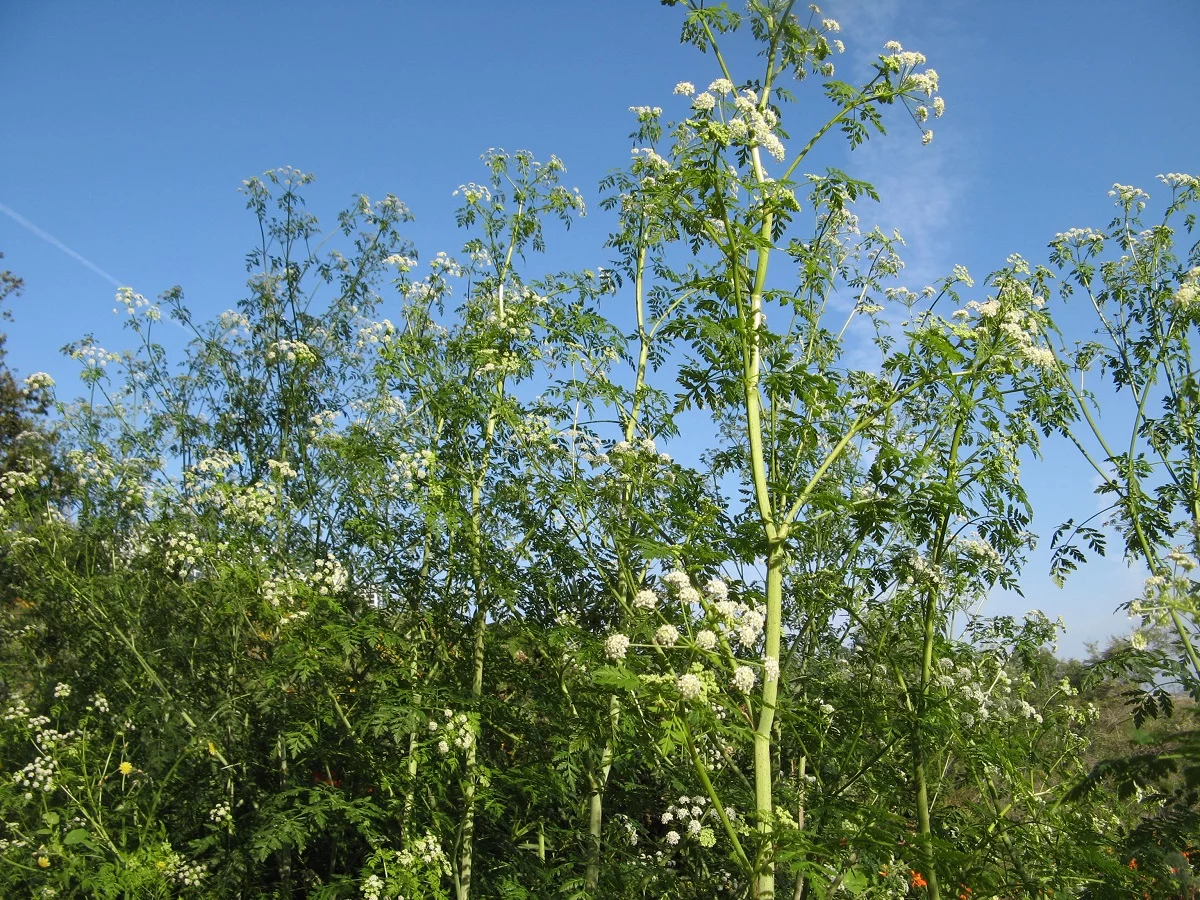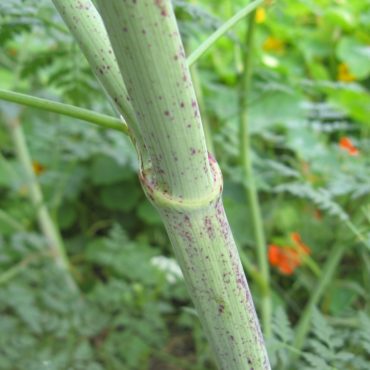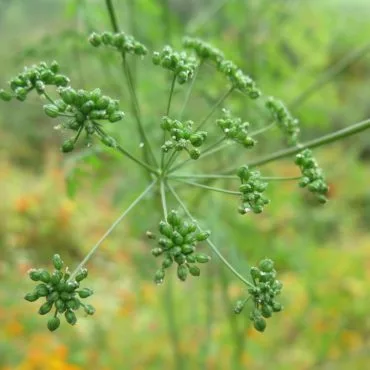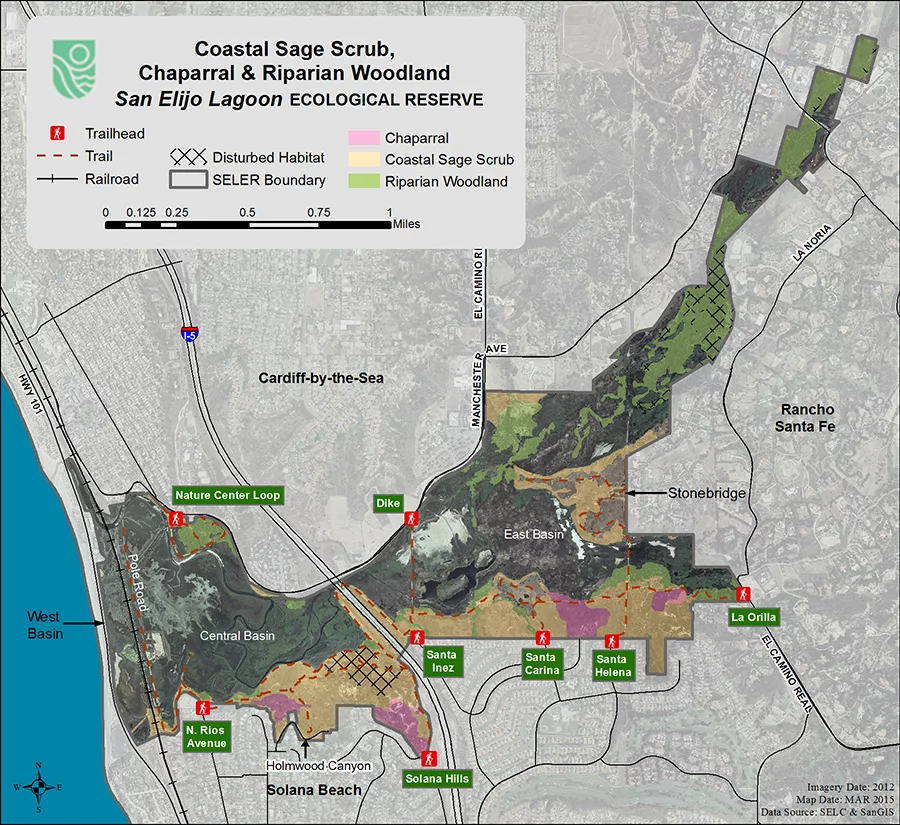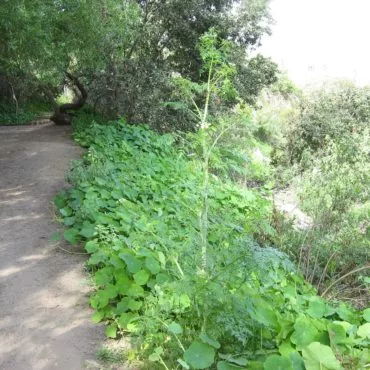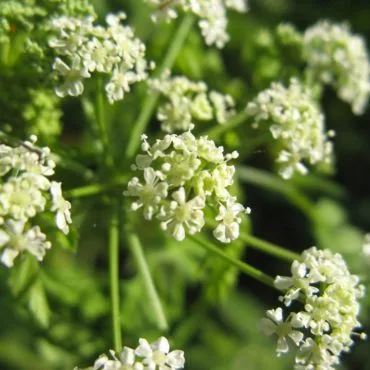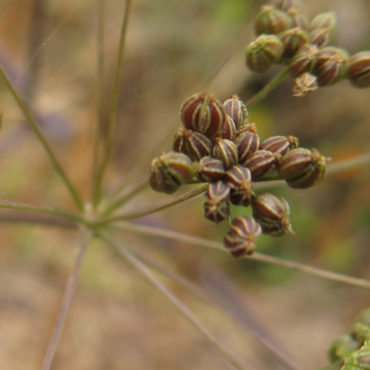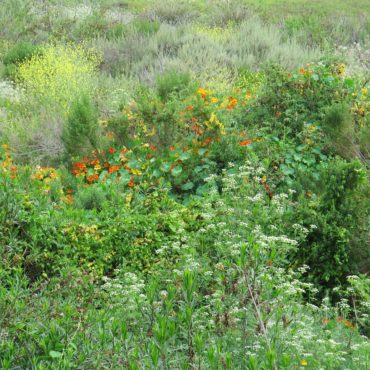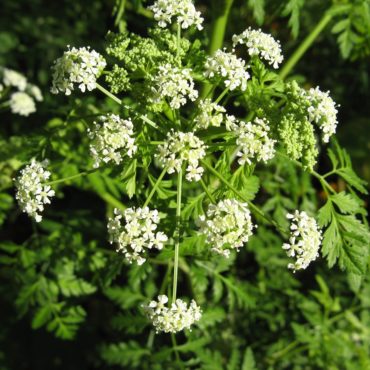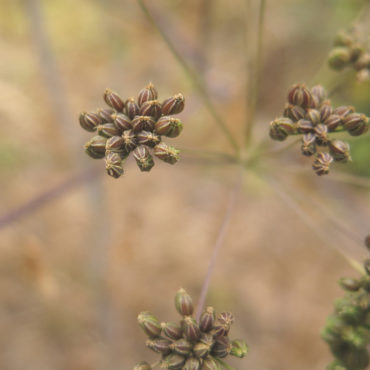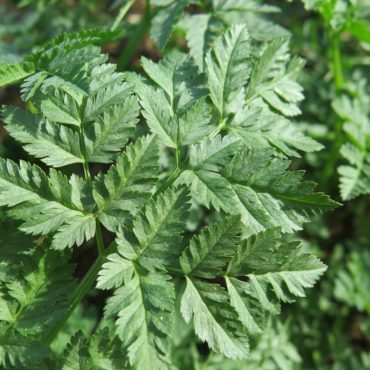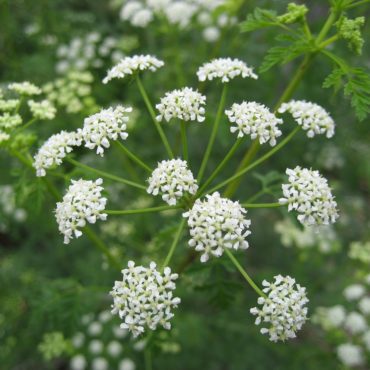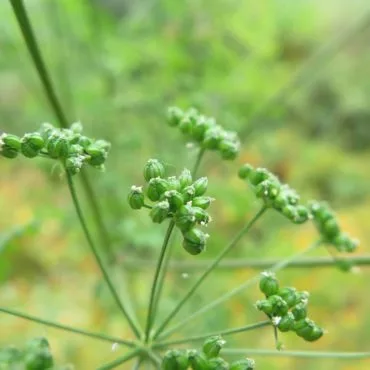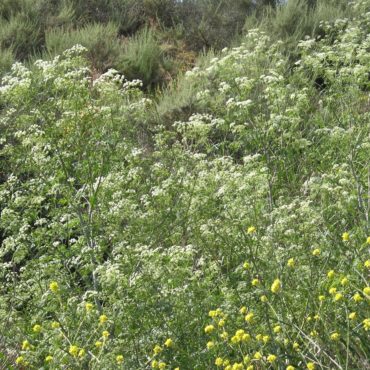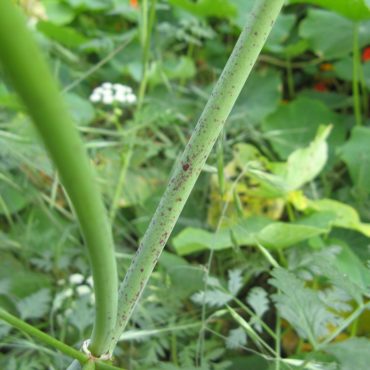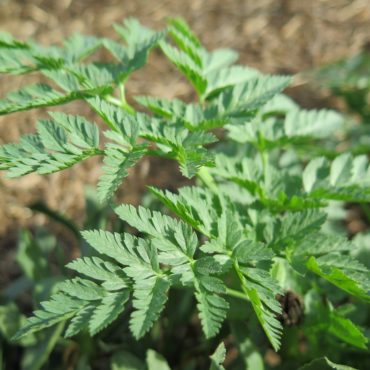Poison hemlock is a tall, sturdy, conspicuous biennial herb (occasionally annual) from a fleshy taproot. The entire plant is poisonous!
The first year it produces a basal tuft of large, compound green leaves that resemble fern fronds. Basal leaves are usually two-times pinnately divided; leaflets in turn are pinnately dissected. Basal leaves are reported to 36 inches (90 cm) long. The second year, a stout, upright, branching stem grows to 6 or 10 feet or more high. The lower portions of many stems, are marked with streaks, splotches and spots of reddish-purple. Cauline leaves resemble basal leaves. They alternate along the stem with petioles clasping the stem, becoming smaller higher on the plant. The leaves have a distinctive odor, variously described as musty, rank or mouse-like.
Flowers occur opposite a leaf, in large, compound slightly domed clusters, or umbels that generally extend beyond the foliage. Each compound umbel may be 3 1/2 inches (9 cm) across and consists of several smaller umbellets of flowers also originating at a common point. The individual flowers are bisexual (rarely pistillate) white, less than 1/8 inch (.2-.35 cm) across. There are no sepals and the five petals are ovate narrowing to a small terminal point that curls inward, giving some petals a heart-shaped appearance. Five stamens initially curve inward, expanding outward when mature. The single pistil has a two-chambered inferior ovary with a two-parted domed surface topped by a small, flattened structure, the stylopodium, that supports two small styles, each with minute stigma. Flowering occurs April to Sept.7
The fruit of poison hemlock is broadly oval, 1/8 inch long (.2-.32 cm) or less and clearly divided into two flattened halves with a persistent stylopodium. The surface is smooth, with conspicuous pale ribs. When young, the fruit is green. At maturity, it dries brown and the halves split apart from bottom; each half contains one seed.

